(Strand)om Stories: Captain America: War and Remembrance Review
This small run shows a unique glimpse into Cap's life by two excellent creators whose potential is only partially displayed
—by Nathan on July 3, 2024—
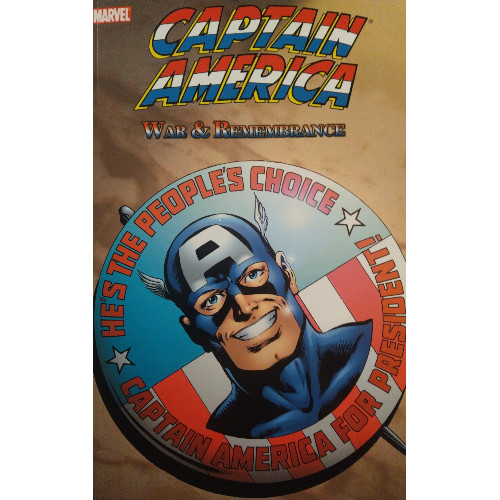
Three years ago to the day, I published a review of a volume of Captain America comics–specifically, the second volume in Cap's Marvel Knights series–as a fun way to commemorate the Independence Day holiday. Reflecting recently on that blog (and with tomorrow in mind), I wondered if I should do something similar, publish a review of a different volume of Cap comics to mark this year's 4th of July.
Periodically, I'll attempt to align a blog with a specific date or period of time. Late last year, I reviewed Grant Morrison and Dan Mora's Klaus from Boom! Studios, a "Batman: Year One" kind of narrative detailing the "origin" of Santa Klaus, shortly after Christmas (even though I fully intended to get it published prior to the holiday). One year, I reviewed Batman: The Long Halloween to mark–what else?–Halloween. Consider this a very loose "series" in the sense I'll drop the occasional blog to commemorate a particular point in time.
And who better to represent the spirit of independence and freedom than the man who wears a flag on his chest?
Captain America: War and Remembrance
Writer: Roger Stern
Penciler: John Byrne
Inker: Joe Rubinstein
Colorists: Bob Sharen and George Roussos
Letterers: Jim Novak, John Costanza, and Joe Rosen
Issues Collected: Captain America #247-255
Volume Publication Date: January 2007
Issue Publication Dates: July 1980-March 1981
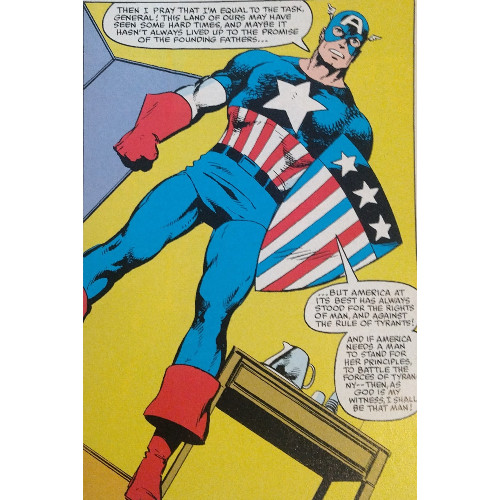
I'm not overly familiar with "runs" on Captain America the same way I am with, for example, Daredevil. I can list off a host of folks who wrote Daredevil comics–Frank Miller, Ann Nocenti, Kevin Smith, Brian Michael Bendis, Ed Brubaker, Mark Waid–but for Cap? I know Mark Gruenwald wrote the character for about ten years, and I know Brubaker "resurrected" Bucky as the Winter Soldier, but otherwise, I couldn't tell you a litany of folks who penned the adventures of the Star-Spangled Man with a Plan.
I'm not usually one for collecting "runs" unless I know of an easy way to grab a writer’s time on a book, like Walt Simonson’s Thor or Frank Miller's Daredevil. Heck, I'll even throw Chris Claremont in there, but that's primarily because I love the guy's Uncanny X-Men work and have been willing to grab an omnibus here and there over the years to collect a good chunk of the man's seventeen-year run on the title. When I heard Stern and Byrne's whole nine-issue Captain America run was available in a single, decently priced volume, I snatched it up. I wanted the complete story.
To my surprise, there really isn't a complete story.
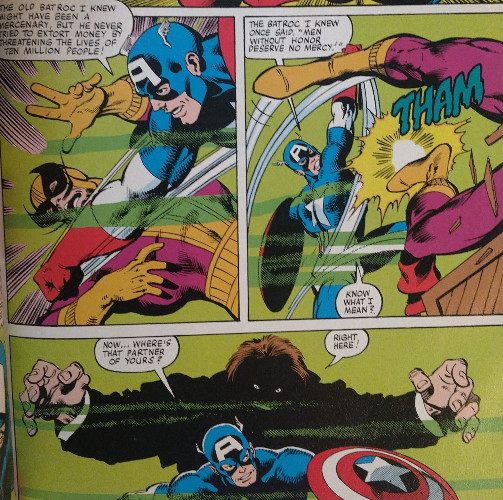
Historical context indicates that Jim Shooter's insistence on single-issue stories drove Stern off the title at a time the writer was hoping to develop a three-part Red Skull narrative with Byrne. Partially to support his friend, Byrne quit as well. This, to me, provides a reason as to why these nine-issues feel mostly like one-and-dones, with a few two-issue tales thrown in and some overarching subplots tethering the whole thing together, sorta. This isn't like Claremont's X-Men, which feels like one story organically leading into the next. We get Captain America wrestling with his memories, then wrestling with Dragon Man, then winging it to England to fight Baron Blood. Short adventures, with little connection between them.
Stern and Byrne (which is, probably, the most fun partnership in comics to say out loud, right up next to "Bendis and Bagley") focus less on an overarching story and more on the overarching concept of who Captain America is as a character. We get plenty of shots of Cap bounding across rooftops and slinging his shield, and though several of these tales boil him down to "costumed adventurer," the creative team never loses sight of what he represents. They present the notion of "Cap as an ideal" in small moments, like when a crook can't bring himself to shoot the First Avenger, and in large, like when a whole issue is dedicated to whether Cap should run for presidential office.
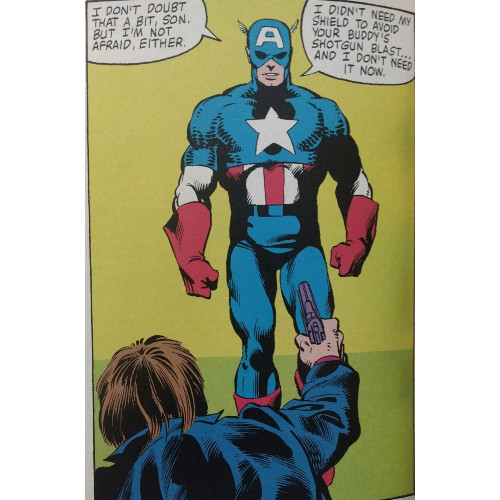
I complained, when reviewing the first volume of Cap's Marvel Knights series, that the writers made Cap patriotic to the point of jingoistic (you can thank Mark Waid for introducing me to that word in Kingdom Come–whoever said comics couldn’t be educational?). His passion for America comes across as vitriolic, particularly in the way he sics himself upon the terrorists responsible for an attack on American soil. He aggressively reinforces this blunt notion of "America," whatever the writers intended that to be. Given the series was launched less than a year after the 9/11 attacks, the patriotic passion is understandable, but years later, the nationalistic fervor in which Cap behaves is difficult to swallow and harder to stomach. There's a line between protecting your home country and going out of your way to vengefully smash your enemies, and Cap crosses that line. He may not ask anyone as dumb a question as whether the A on his forehead stands for France, but he doesn't act very Captain American-y.
The Cap presented in these early 80 stories is a more nuanced figure. In a retelling of his origin, he straight up admits America isn't without its problems. He refuses to be blinded by patriotism. Yes, he defends the country against adversaries such as Batroc the Leaper and Mr. Hyde, but he does so to protect a nation he refuses to idealize. There's importance in honoring that nation and respecting its principles, but this Cap doesn't go off the deep end in how he sees America…nor does he let himself become persuaded by his own self-importance. SPOILER, but he refuses to run for President because he realizes he cannot serve as both Commander-in-Chief and as a hero. As engaging as a series focused on Captain America as President of the United States would be, the notion is probably best left for an alternate universe or "What If-?" style narrative.
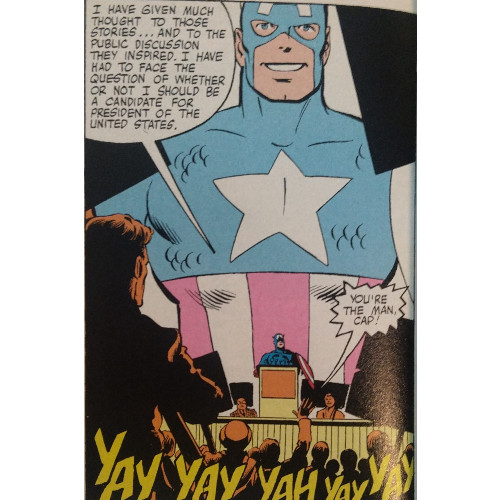
Stern and Byrne (seriously, never gonna tire of saying that) juggle a litany of superhuman conflicts along with Cap's personal side as Steve Rogers. When he isn't bludgeoning baddies or indulging in some speechifying, Cap holds down a gig as a freelance artist, occasionally worrying about balancing sleep with paying the bills. He develops an affection for a redheaded neighbor. He makes excuses for why he has to leave social engagements when trouble arises. He stores his civilian clothes on a rooftop. And, no, I haven't suddenly switched gears and started talking about Spider-Man! Stern and Byrne make the First Avenger downright Peter Parker-esque in these pages. If Cap comics had explored similar notions in earlier issues, I am unaware of how they did so. I hadn't considered that writers would be interested in "Steve Rogers, the man" as they examined "Captain America, the symbol" to this degree. Maybe it's because I keep reading comics where Cap is only a symbol, stubborn and defiant in his nationalism, But Steve is far more than an icon dressed in the American flag, and the duo remove that flag often enough to remind us of his humanity.
Our creators don't set out to redefine Captain America in these pages–if anything, they endeavor to reinforce the concept of who he is. Back when Stern was an editor and not writing the title (as he discusses in an introduction), a different narrative had served to contradict some previously established lore surrounding the good Captain's origin. Styrn (how's that for a mash-up?) work to untangle that conundrum, bookending their run by retconning the confusing earlier narrative and retelling Cap's origin. They set the record straight on how Cap became Cap. It's somewhat confusing if you (like me) aren't as familiar with Cap's continuity up until this point–I'm really only aware of his origin, Bucky's "death," and Cap's revival by the Avengers. But the final issue lays to rest any of those pesky plot holes.
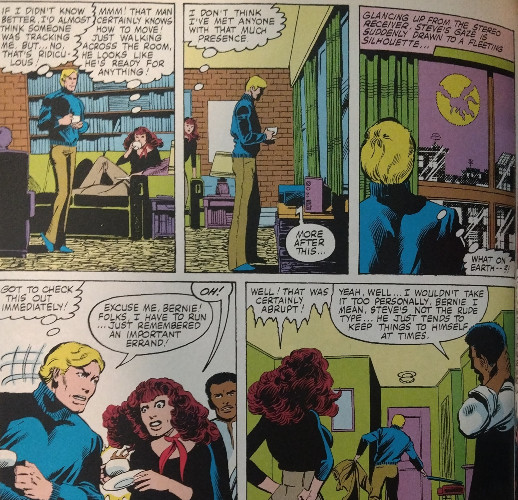
Styrn planned to do more with the series before the meddlesome Jim Shooter barged in on their plans, causing both men to quit. It's a real shame. We're given a sense the two planned more on the title (specifically, that three-issue Red Skull story I referenced earlier), so the retelling of Cap's origin, though a fitting "cap" on the run, feels somewhat less celebratory than it should. I wish the creators had been allowed more developmental control; they don't necessarily leave any loose ends, but across these nine issues, you only see the surface of what the two could accomplish. Both men are proven storytellers–look no further than Stern's "Nothing Can Stop the Juggernaut" or Byrne's revival of Superman–and put a great deal of energy into sculpting these stories. Perhaps if events had been kinder to them, this handful of pretty good issues could have been the foundation for a pretty good run.
Though truncated, these issues represent a unique slice of Captain America's life. Steve Rogers is fashioned as fully human, a man with pressures inside and outside of the costume. As he protects the country he loves, he works to live within it–he's got a job, he finds a girl, he sees where he can be most beneficial to America and her people. Sometimes that means keeping Mr. Hyde and Batroc from transforming New York City into a crater. Sometimes it means debating whether he should run for POTUS. Sometimes it means staying up late to finish a batch of sketches for the job he works when he isn't leaping across rooftops. In costume, Cap chooses to represent ideals which uphold America as a country, ideals we celebrate on Independence Day even when it looks like our political climate fails to follow them. Out of costume, Steve Rogers takes advantage of the freedoms he's fought for, learning to live and love in a land with liberties abundant. Uneven? Yes. Universal? No. But worth celebrating all the same…perhaps not always for what America is, but for what America should and could be.
Maybe we could use a President Rogers after all.